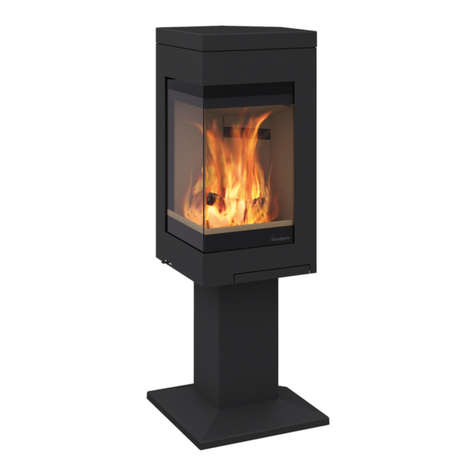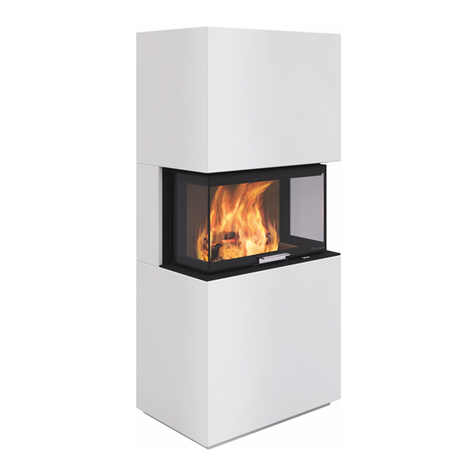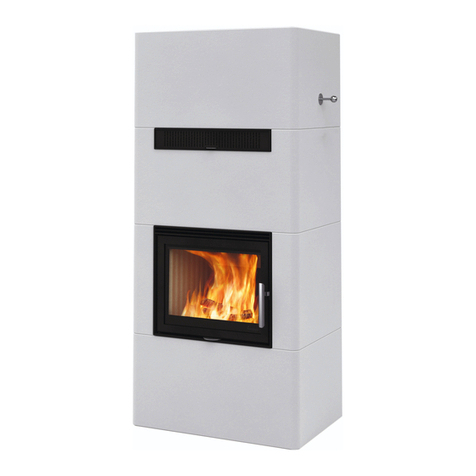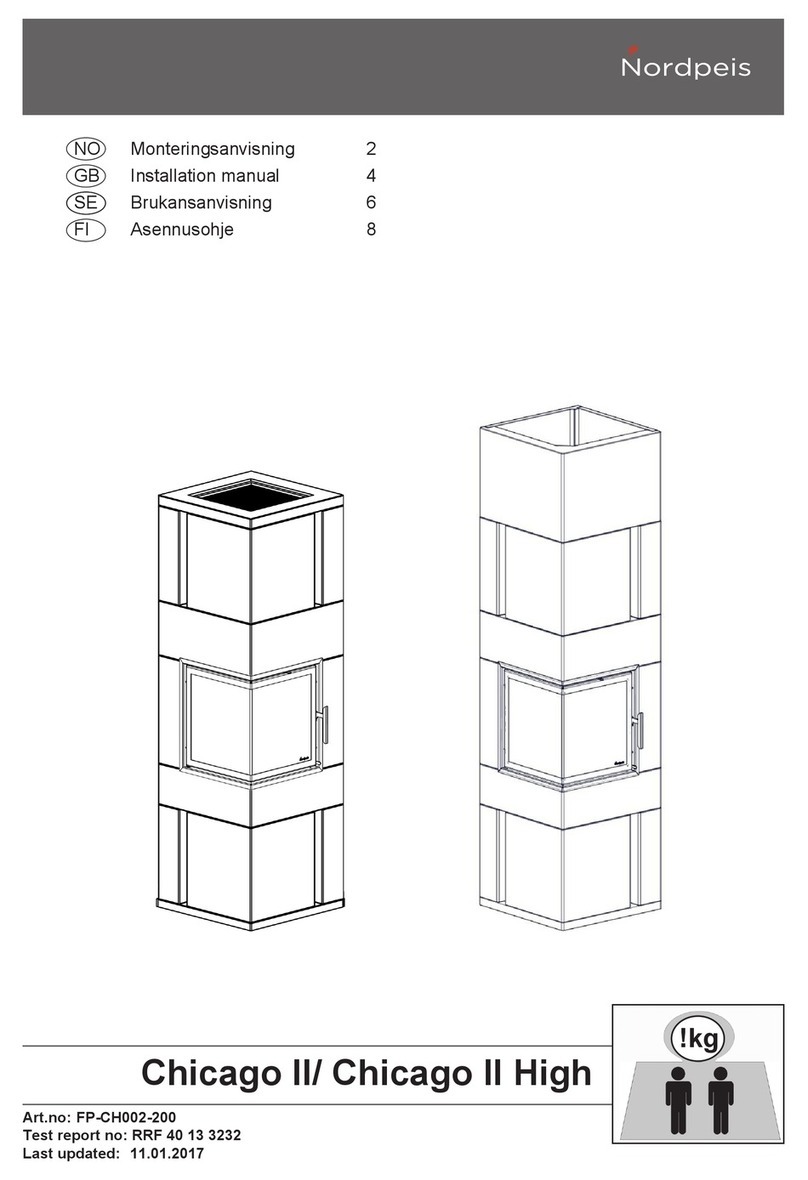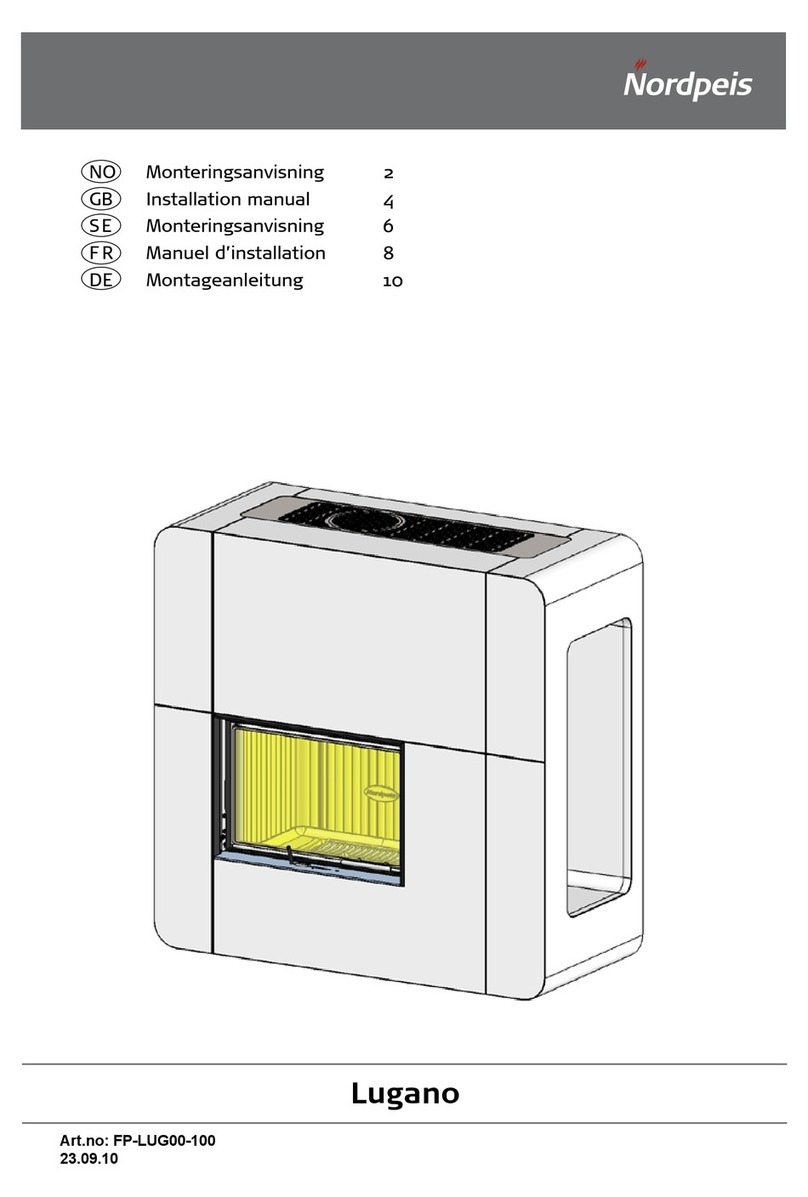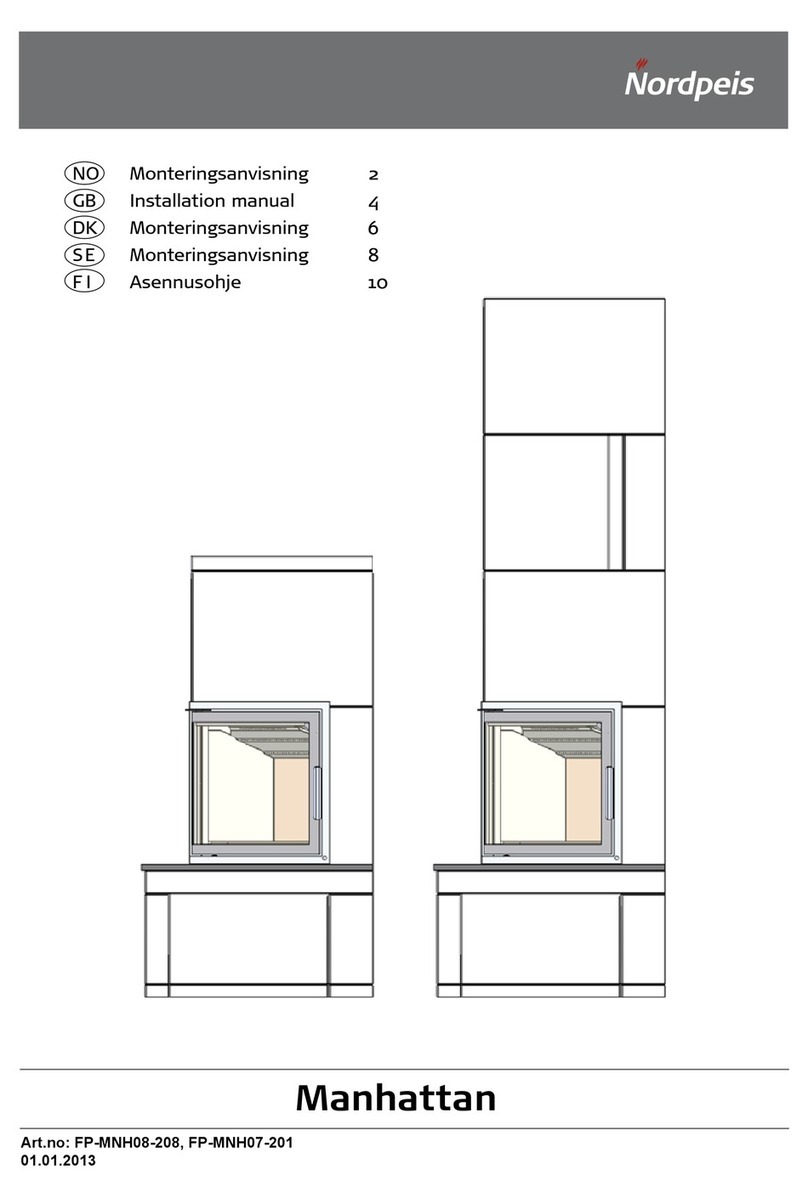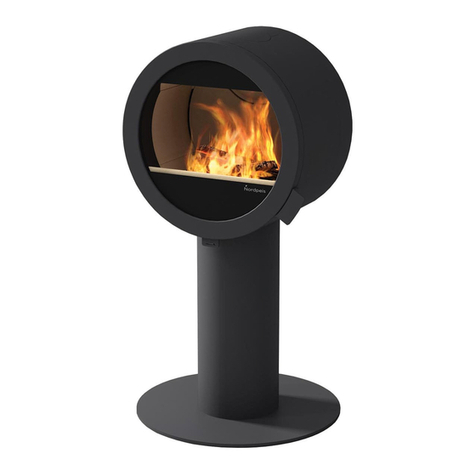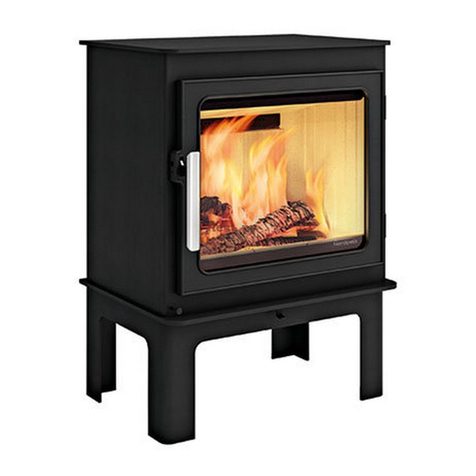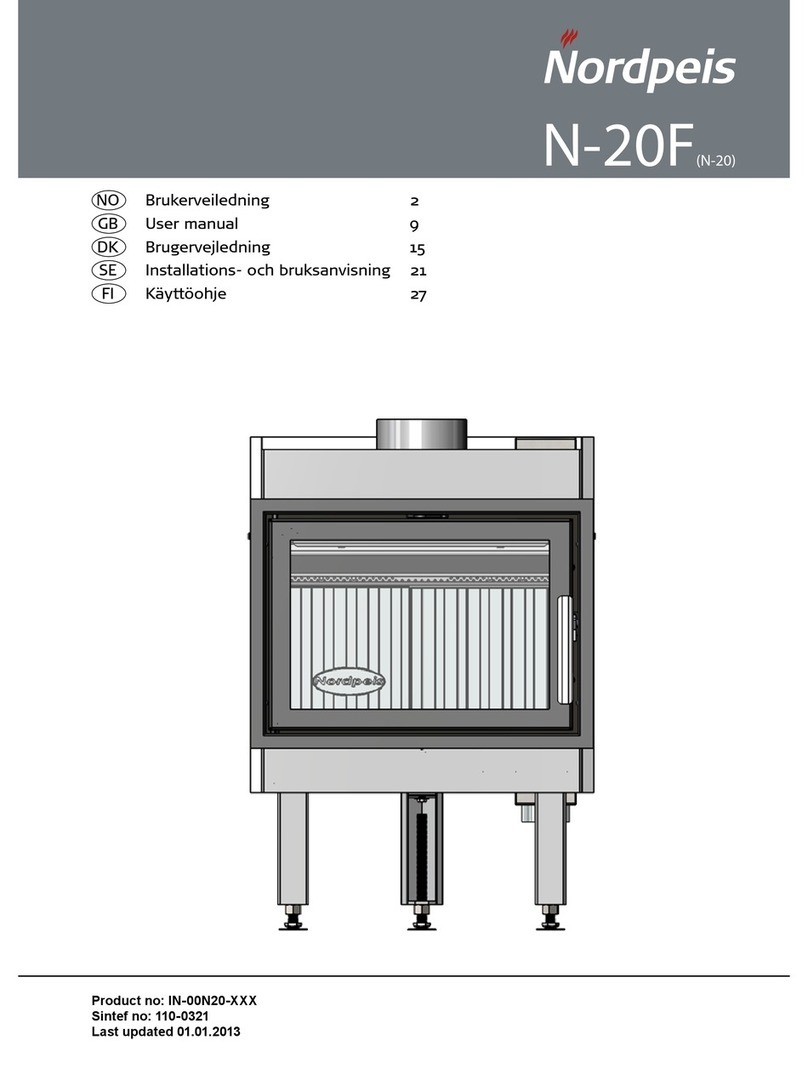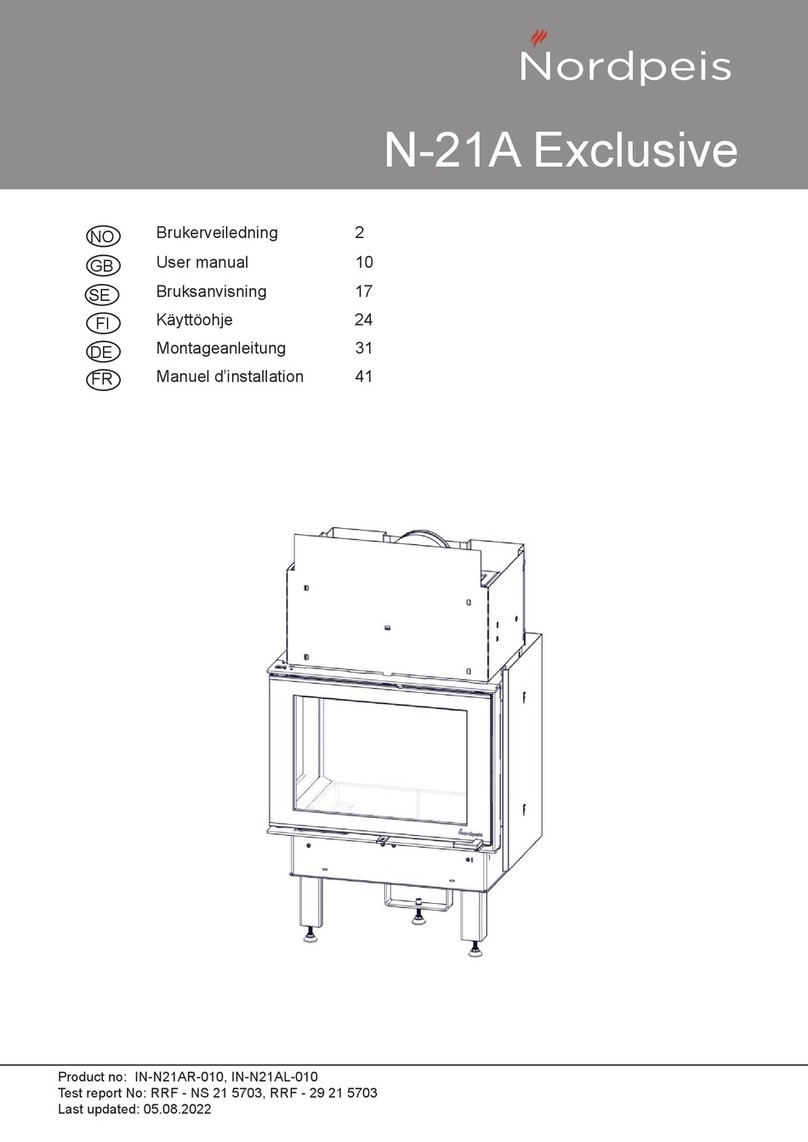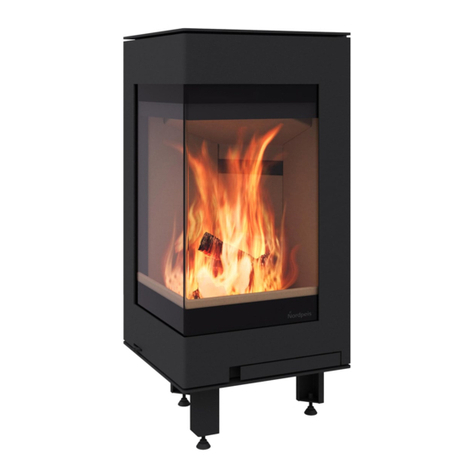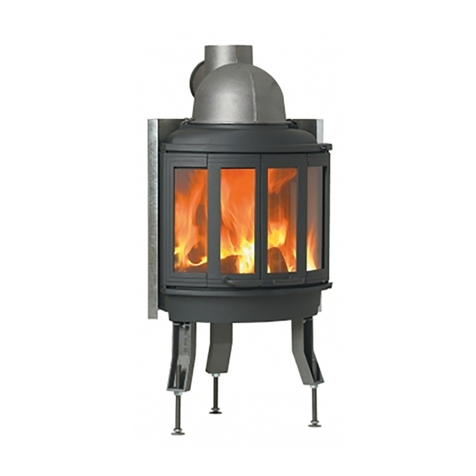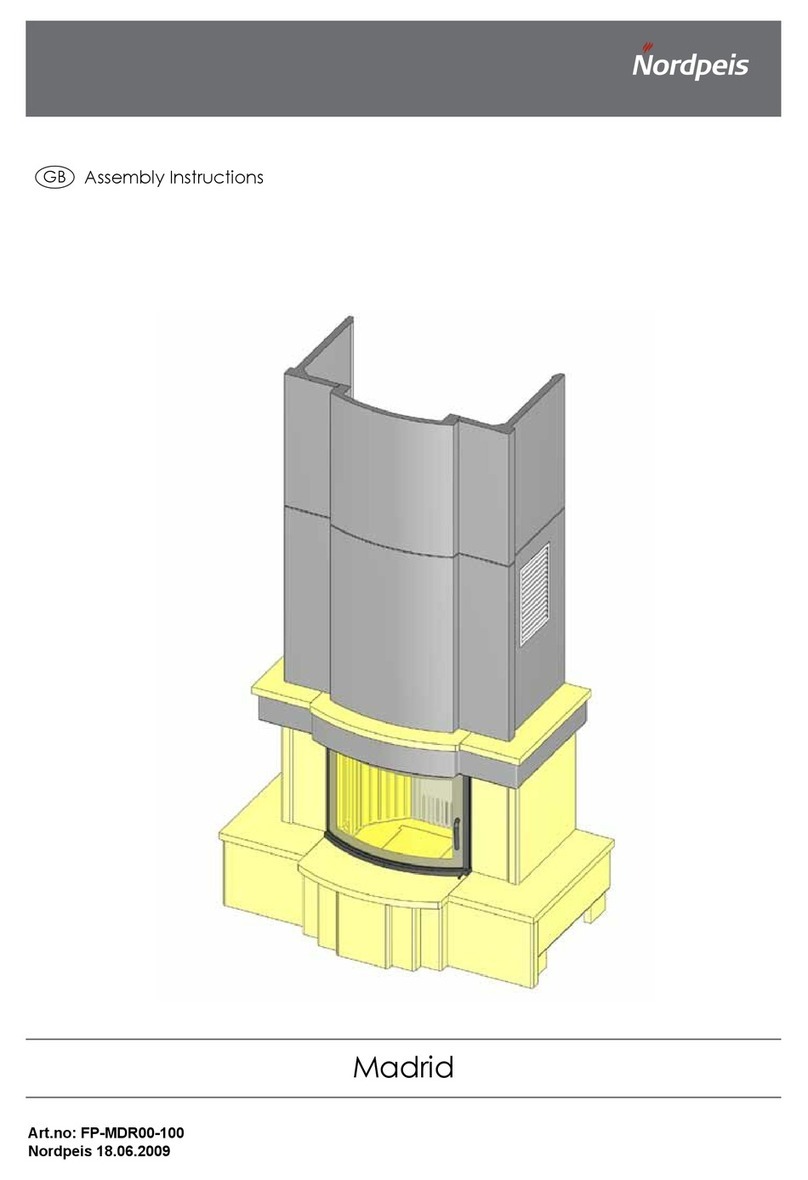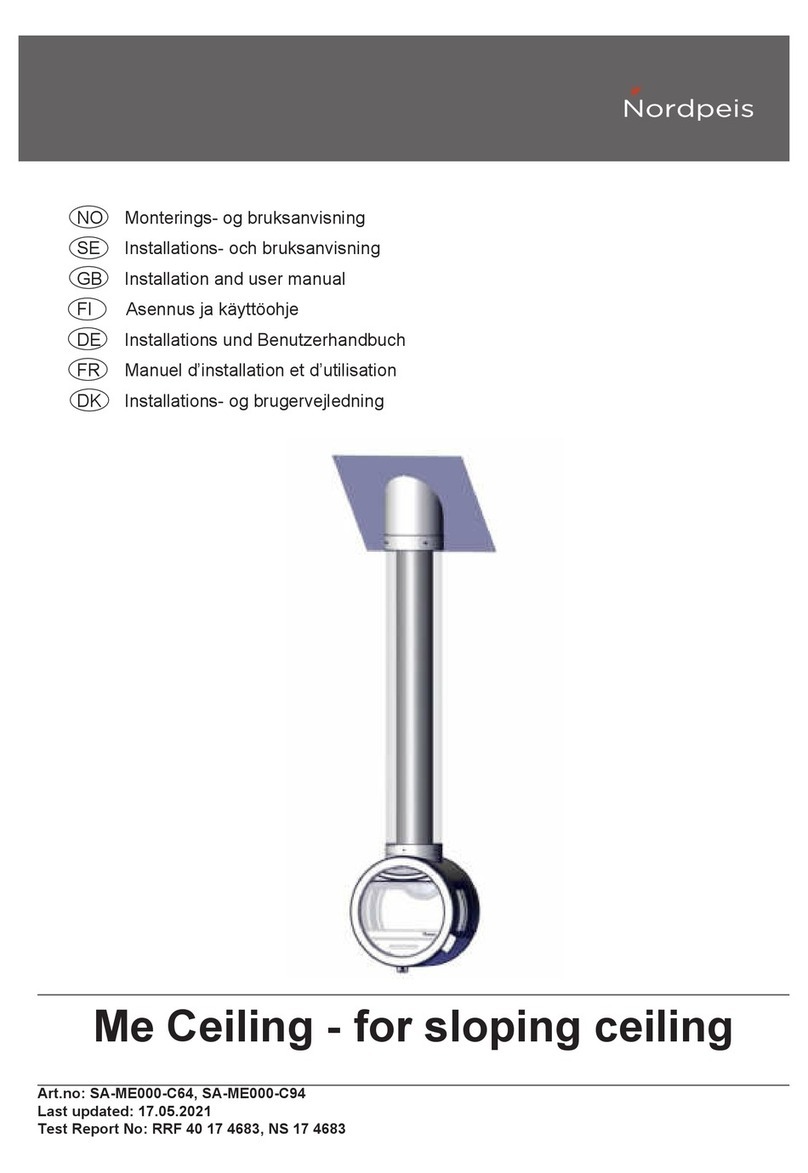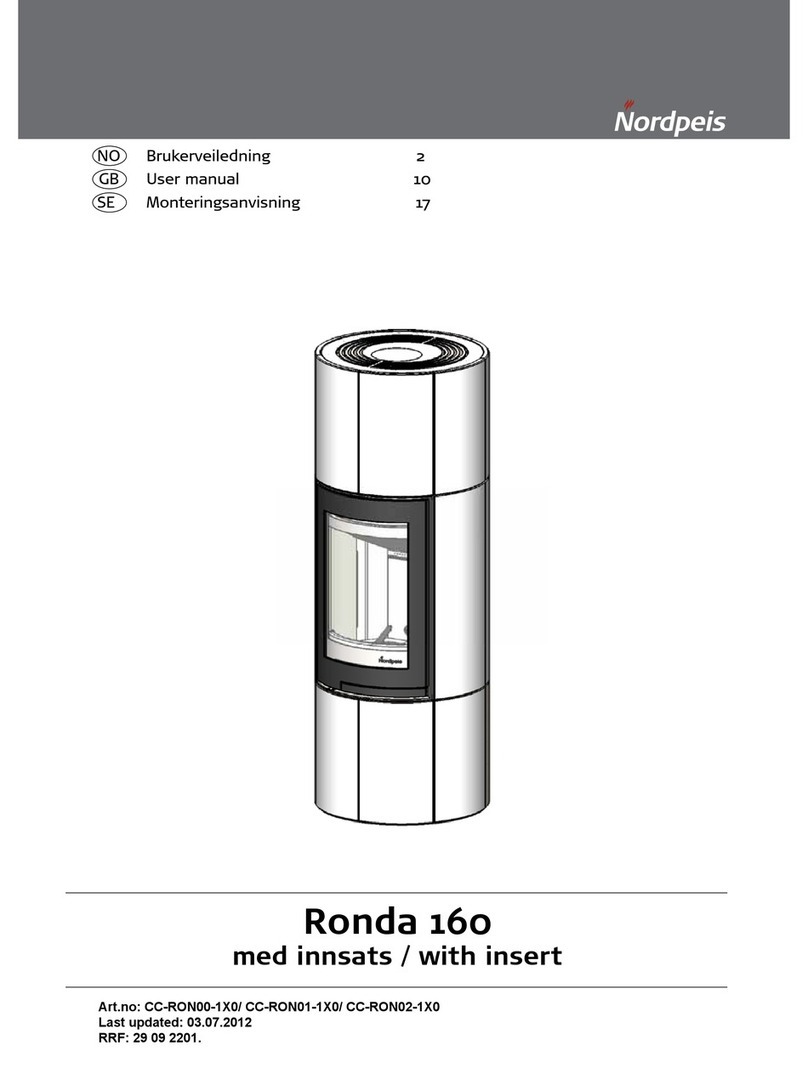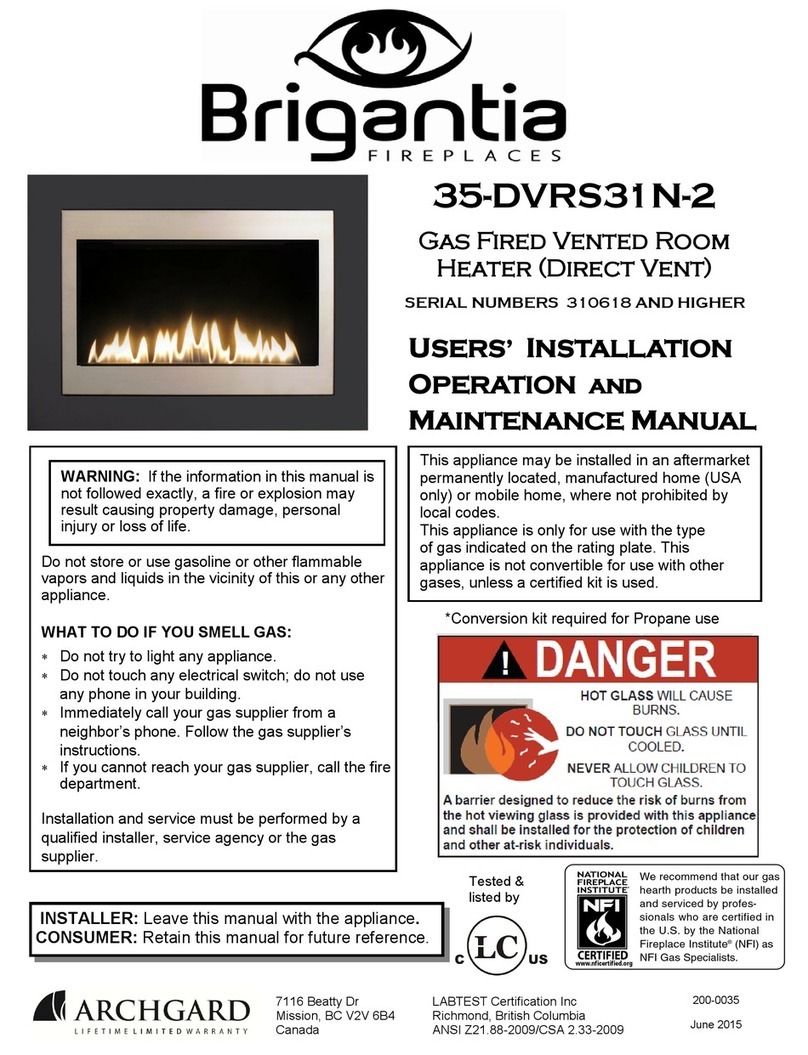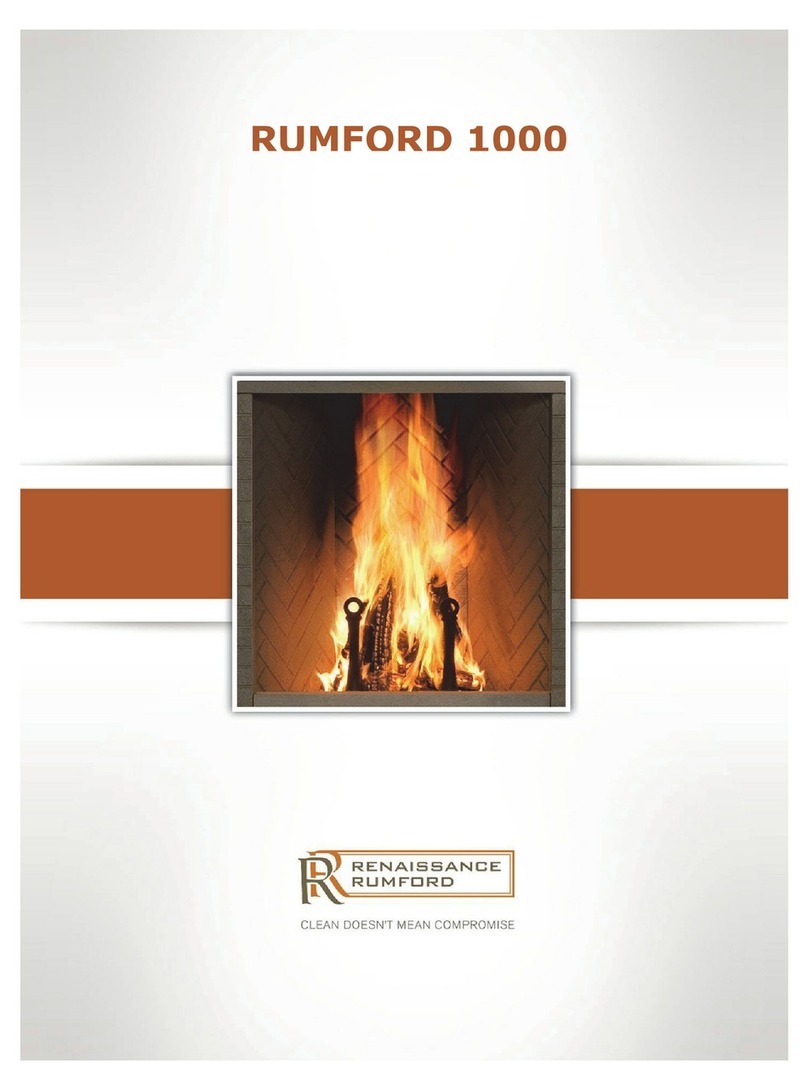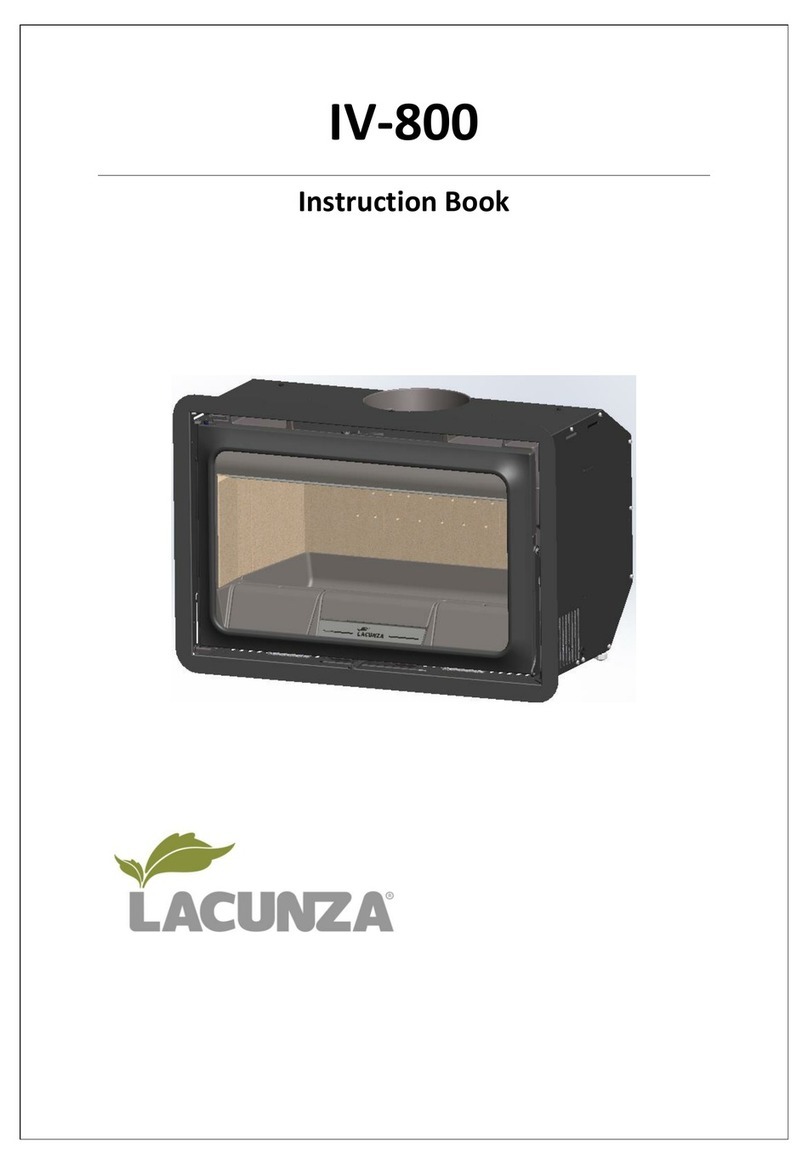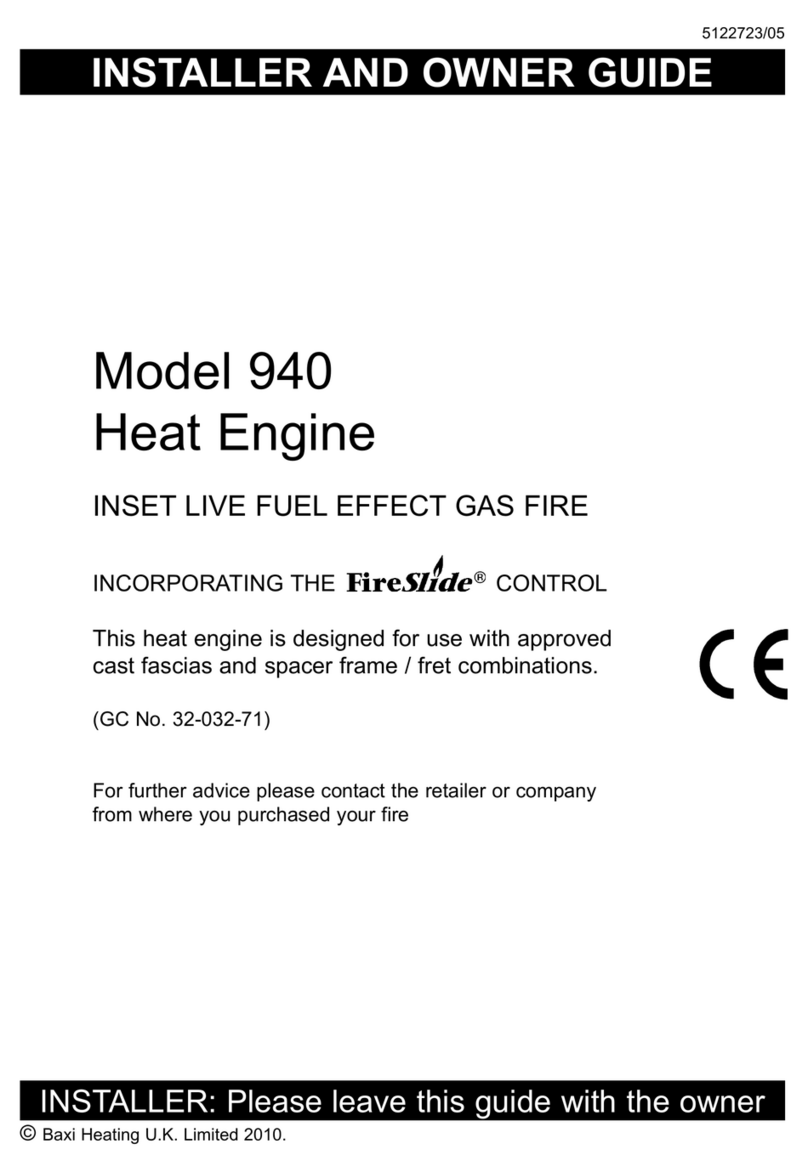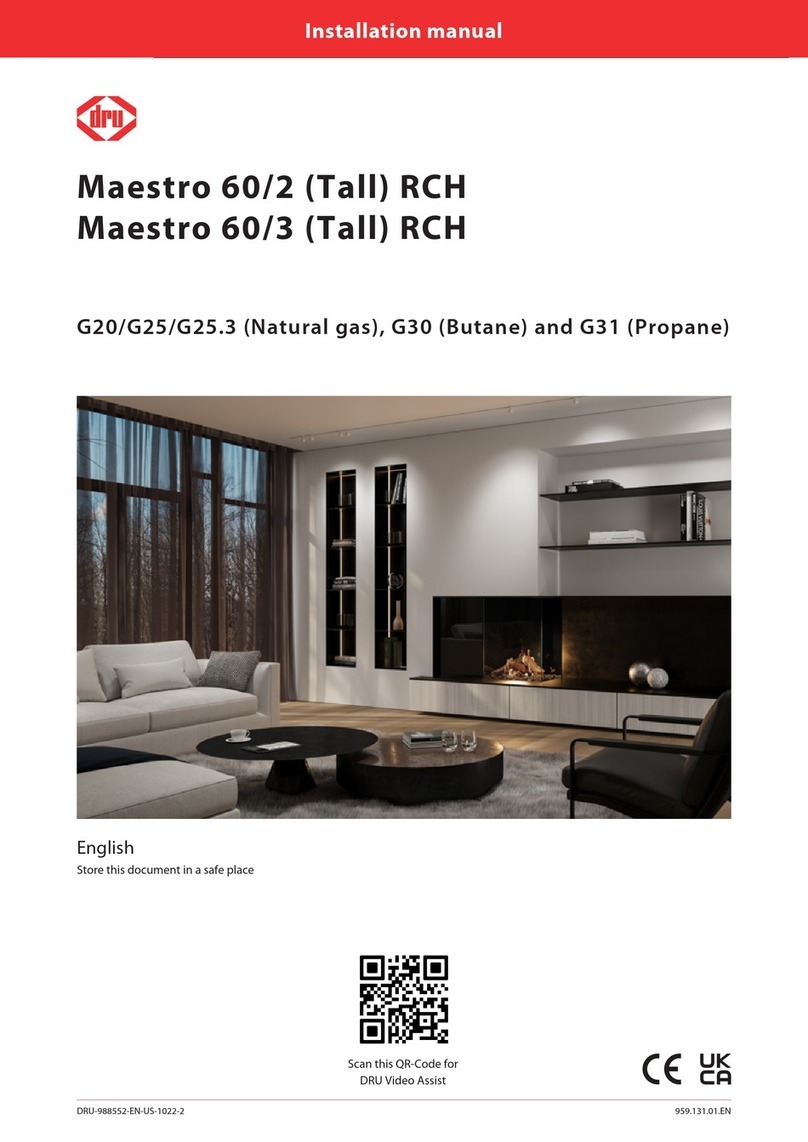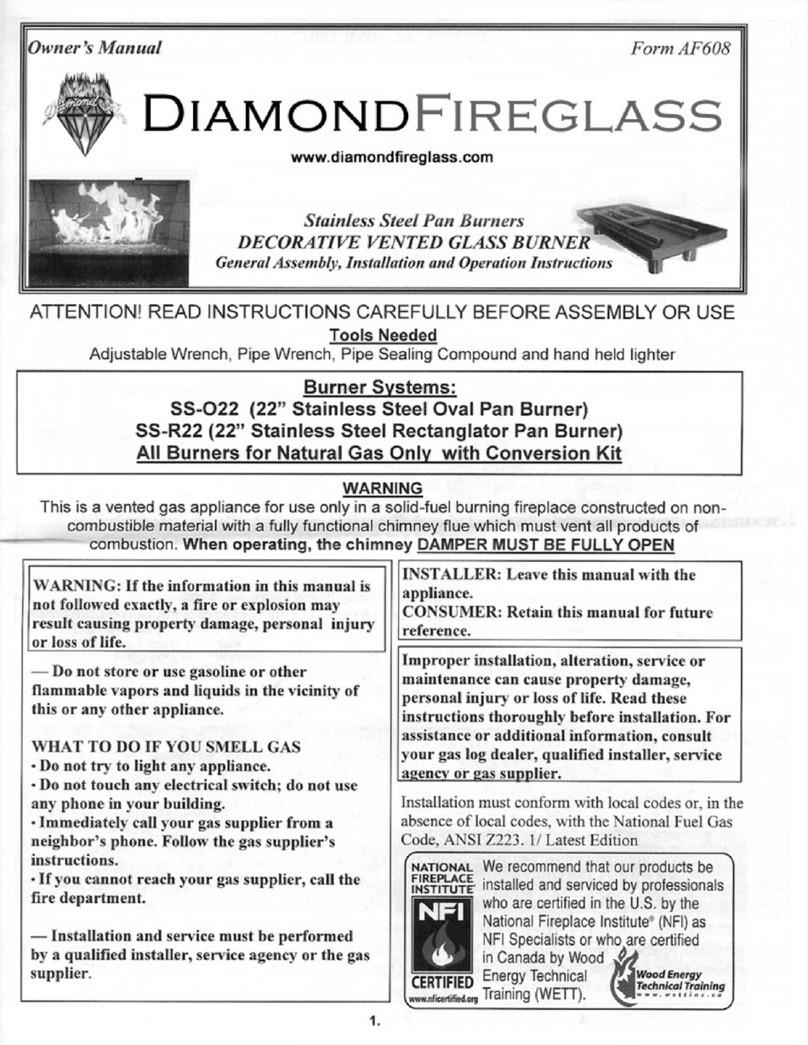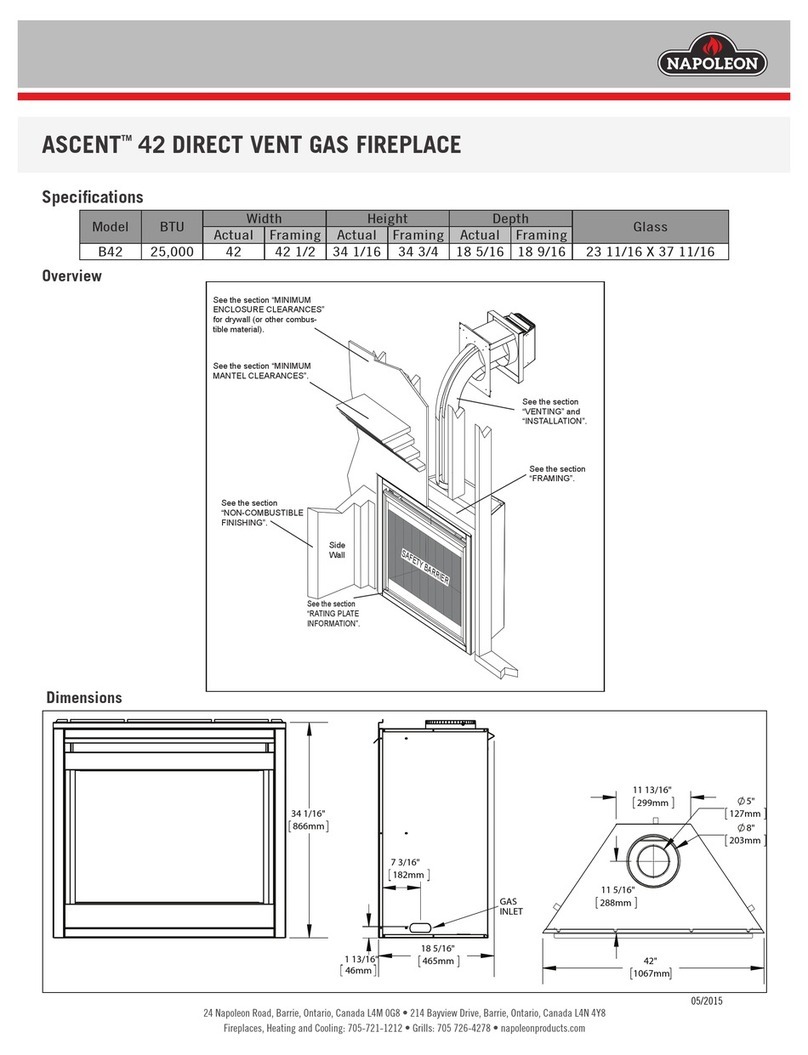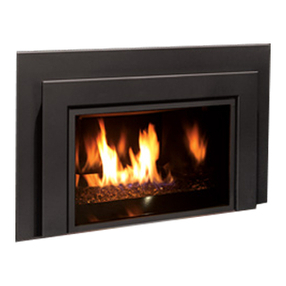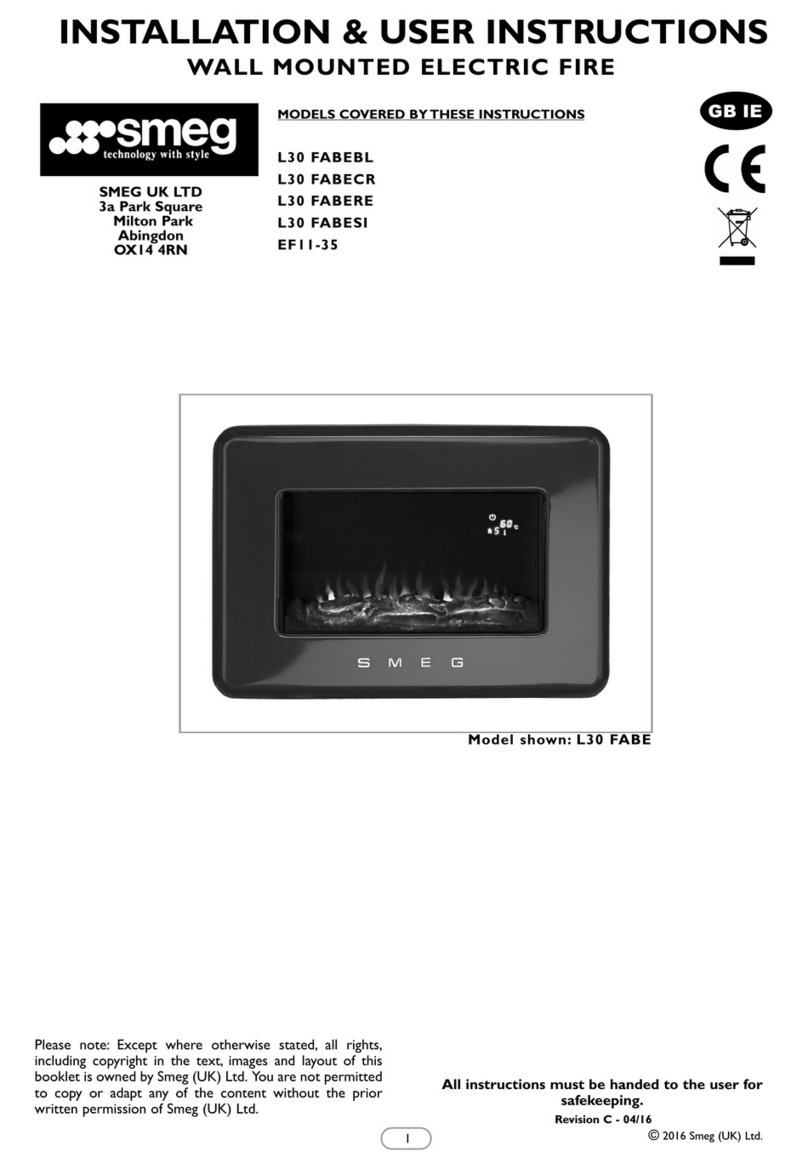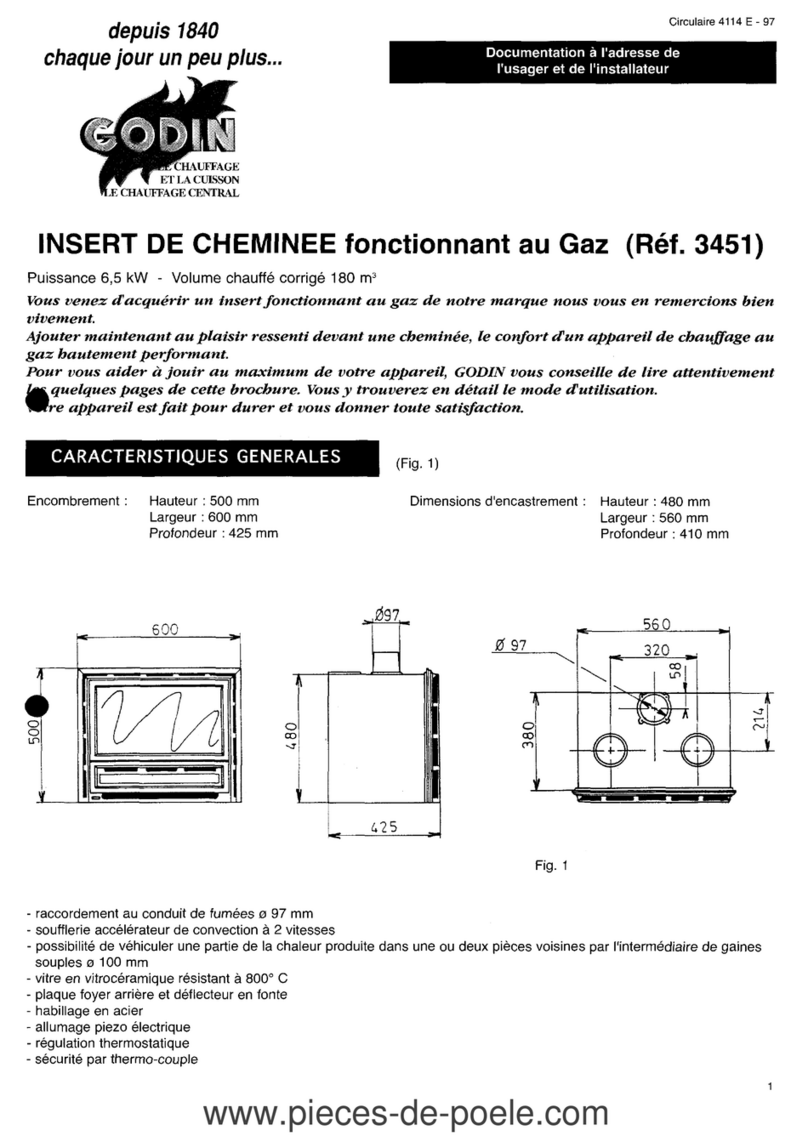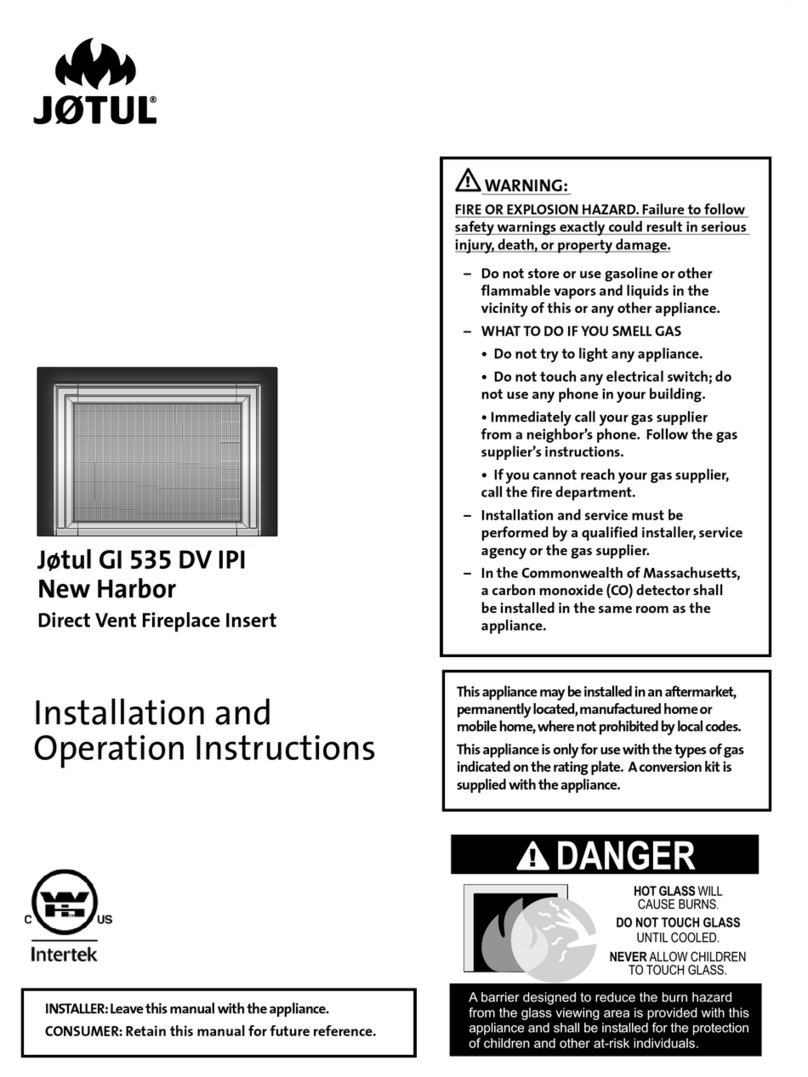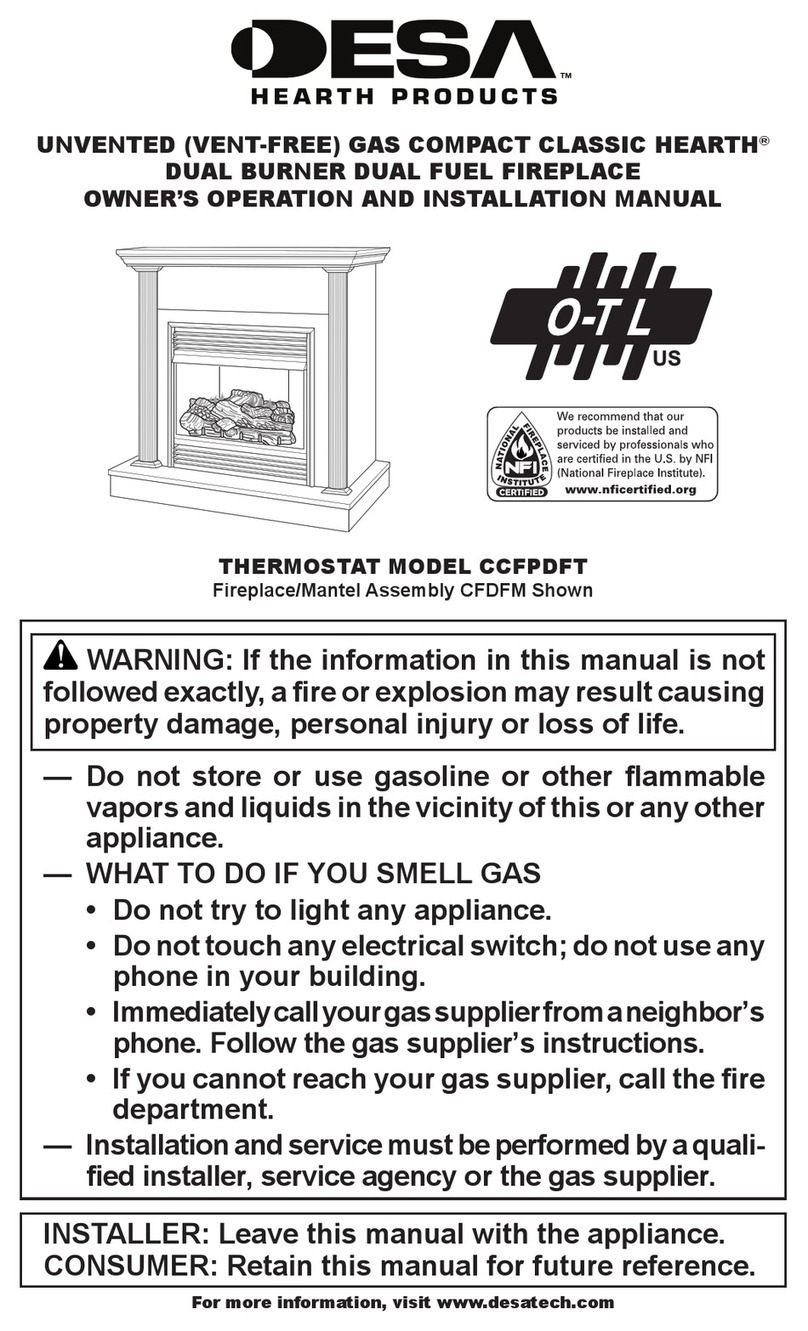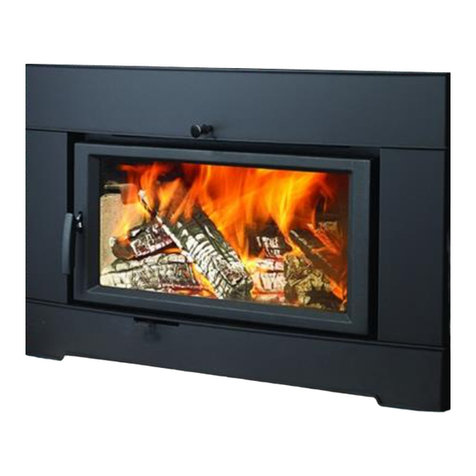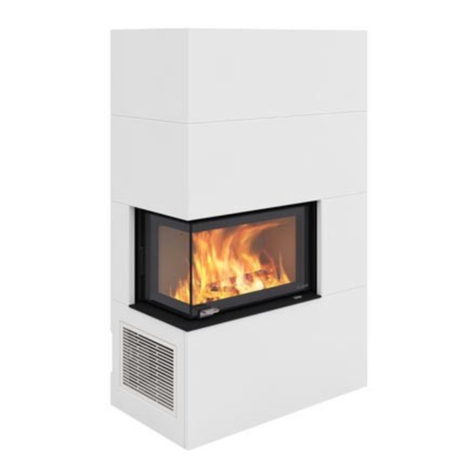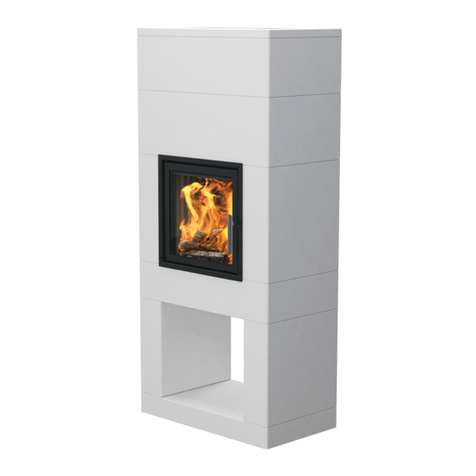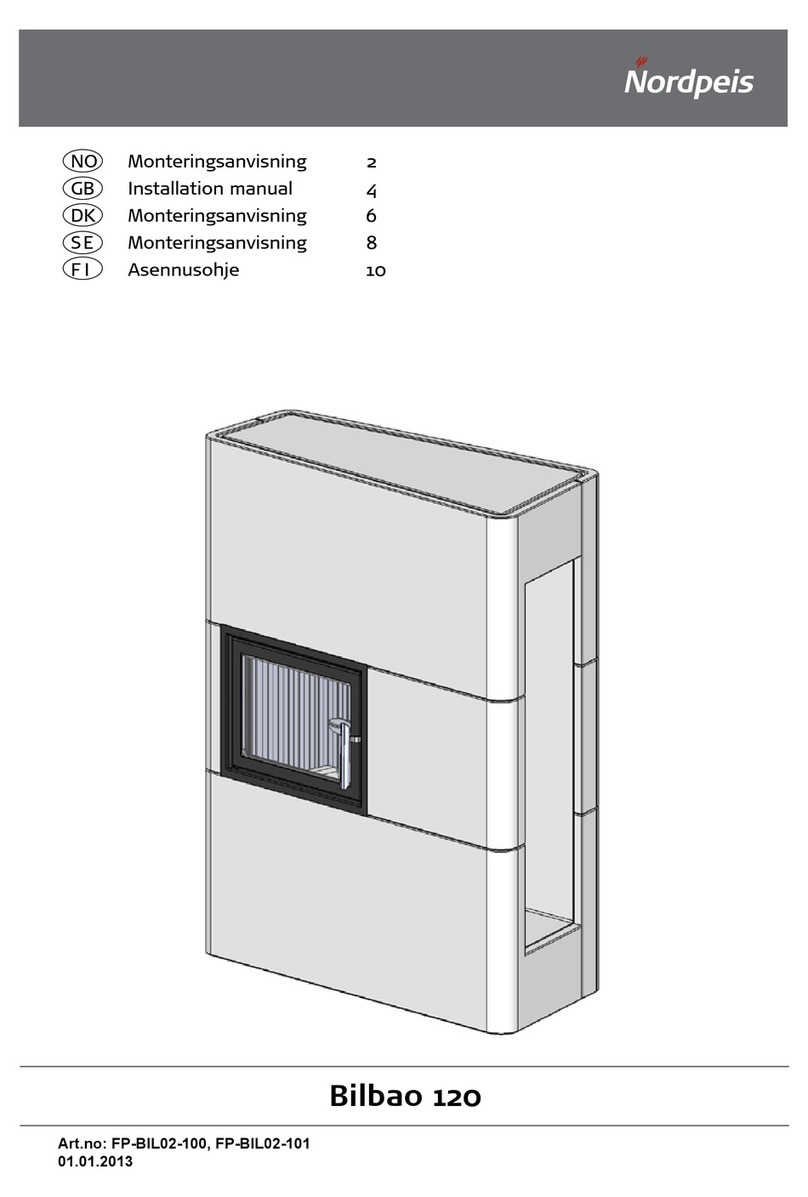Ifneededleavethedoorslightlyopentherst2-3times
the insert is used.
It is advisable to ventilate the room well when using
for the rst time as the varnish on the product may
release some smoke or smell. Both the smoke and
smell will disappear and are not hazardous.
Kindling wood
Finely chopped (diameter of 3-5cm)
Length: 25-30cm
Ca. amount pr lighting : 2 kg (beech)
Place the air vent control in ignition (FIG A) (Pull out).
Insert small, dry pieces of wood, ignite and ensure the
ames have taken proper hold of the wood. When the
ames are stable and the chimney is warm, push in the
air control out of the ignition mode and regulate the re
normally.
When there is a glowing layer of ash, new wood logs
can be inserted. Pull the hot ember to the sides of the
combustion chamber when inserting new logs so that
the wood is ignited from the bottom. Insert 2 logs. One
positioned diagonally to the bottom with left end closer
to left front side of window pane. The second leaned
against rst one also diagonally in opposite direction.
Set the air vent on 45% air valve opening. The re
should burn with bright and lively ames.
Reload size
Chopped wood - 2 logs (diametre of 6-9cm)
Length: 25-30cm
Normal load size. 1,46 kg /h
(Max load size: 2,5 kg/h)
Attention!
Usingtheinsertwithlowcombustioneffectandring
around the clock increase pollution as well as the risk
forareinthechimney.Neverallowtheinsertorueto
become glowing red. Turn off the air vent control should
this happen. Regulation of the air vent control takes
someexperience,butafteralittlewhileanaturalrhythm
fortherewillbefound.
IMPORTANT! Always remember to open
the air vent control (preferably also the door)
before new wood logs are inserted into a hot burn
chamber. Let the ames get a good grip on the
wood before the air control setting is reduced.
When the draught in the chimney is low and
the vent is closed, the gas from the rewood
can be ignited with a bang. This can cause
damage to the product as well as the immediate
environment.
Warning!
In order to avoid injuries, please be aware that the
surfaface may become hot during operation and
extra care need to be taken to avoid skin burn.
6. Maintenance FIG 10 - to FIG 17
Cleaning and inspection
The insert should be inspected thoroughly and clened
at least once per season (possibly in combination with
the sweeping of the chimney and chimney pipes).
How to get access to soot after a chimney sweep see
drawing FIG 10 and FIG 17.
Ensure that all joints are tight and that the gaskets are
rightlypositioned.Exchangeanygasketsthatareworn
or deformed.
Remember that the insert must always be cold when
inspected. The inspection shall be performed by the
Professional servicemen.
Ashes
The ashes should be removed at regular intervals.
Be aware that the ashes can contain hot ember even
severaldaysafterthereisnished.Useacontainer
of non-combustible material to remove the ashes. It is
recommended to leave a layer of ashes in the bottom
as this further insulates the burn chamber.
Take care with the Thermotte plates when the ashes are
removed, particularly when using an ash shovel, so as
not to damage them.
Thermotte™
These insulating plates in the burn chamber (FIG 2)
contribute to a high combustion temperature, which le-
ads to cleaner combustion of the wood and a higher rate
ofefciency.Anyssuresintheplateswillnot
reducetheirinsulationefciency.
If new plates are needed, contact your dealer.
In case it is necessary to take out the insulation plates,
this is done in followieng order.
A.Bafeplate
B. Back plate
C. Bottom front left
D. Bottom front right
E. Bottom plate left
F. Bottom plate right
G. Side plate right / left
See also drawings from FIG 10 to FIG 15.
Please note: Wood logs that are too long can cause
additional strain and crack the plates, due to the tension
created between the side plates.
Please also note that the Thermotte plates may release
coloured dust when touched. Avoid touching any cast
ironpartswithdustonyourngers.Anyvisibledust
on cast iron can be brushed off with the glove that is
included.
Door and Glass
Should there be any soot on the glass it may be
necessary to clean it. Use dedicated glass cleaner, as
other detergents may damage the glass. (NB! Be care-
ful, even dedicated glass cleaner can damage the var-
5
